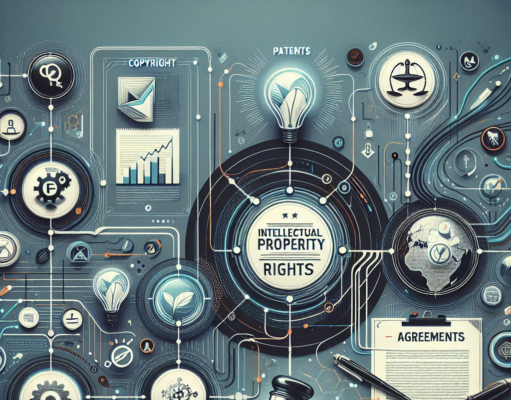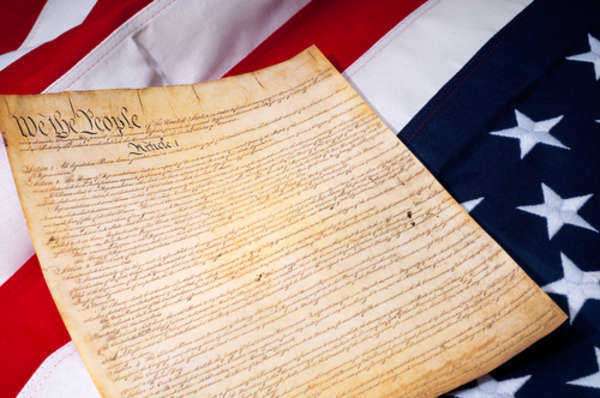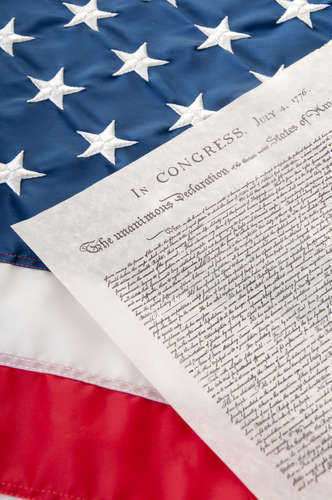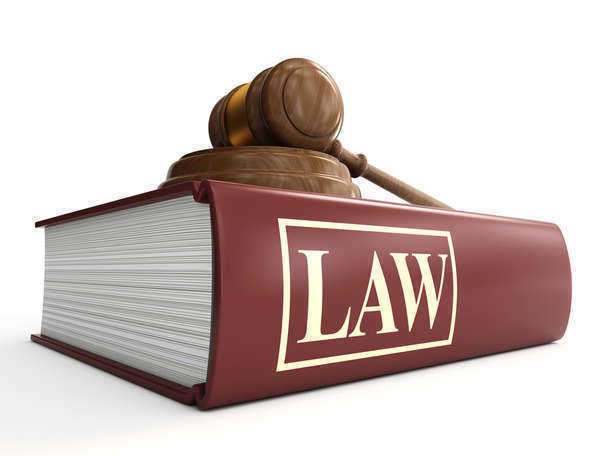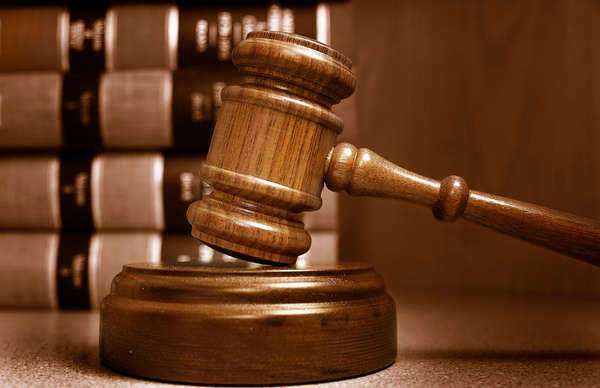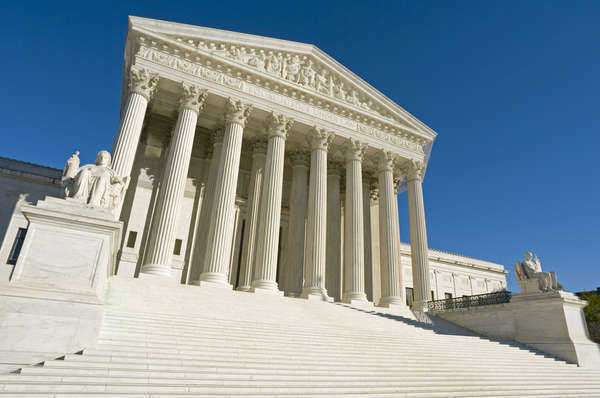Overview of the Ninth Amendment – Simplified and Explained
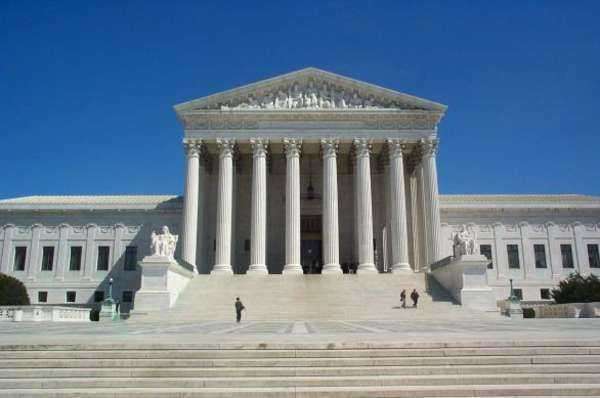
The 9th Amendment: Preserving Unenumerated Rights and Individual Liberties
Introduction
The United States Constitution, with its Bill of Rights, serves as the bedrock of American democracy, guaranteeing individual rights and limiting the power of the government. While the first eight amendments explicitly enumerate specific rights, the 9th Amendment takes a broader approach. It acknowledges that the Constitution does not exhaustively list all individual rights and freedoms, ensuring that unenumerated rights are not denied or disparaged. This article explores the nuances of the 9th Amendment and its connection to the legal landscapes of all 50 states, emphasizing the preservation of unenumerated rights and individual liberties.
Unearthing the 9th Amendment’s Significance
The 9th Amendment, often referred to as the “silent amendment,” holds profound implications for individual liberties. It reminds us that the enumeration of certain rights in the Constitution does not negate the existence of other rights retained by the people. While the 9th Amendment does not specify these rights, it safeguards the principle that they are not to be disregarded simply because they are not expressly listed.
The 9th Amendment Across the States
In this section, we’ll explore the legal landscapes of each state and how they relate to the 9th Amendment. We’ll delve into the principles of individual liberty, privacy, and the protection of unenumerated rights. From Alabama to Wyoming, each state’s interpretation and application of the 9th Amendment contribute to the intricate fabric of the American legal system.
Alabama: Balancing Rights and Liberties
In Alabama, the 9th Amendment’s protection of unenumerated rights aligns with the state’s commitment to preserving individual liberties. The state’s legal framework recognizes that the Constitution’s silence on certain rights does not diminish their significance. Alabama’s courts consider the 9th Amendment when evaluating cases involving issues not explicitly addressed by other amendments, ensuring that unenumerated rights are respected.
Alaska: Unenumerated Rights and Personal Autonomy
In Alaska, the 9th Amendment resonates with the state’s emphasis on personal autonomy and privacy. The state’s legal framework recognizes that individuals possess inherent rights beyond those expressly stated. Alaska’s courts use the 9th Amendment to safeguard personal freedoms, ensuring that unenumerated rights are not overshadowed by enumerated ones.
Arizona: Protecting Individual Liberties
In Arizona, the 9th Amendment’s preservation of unenumerated rights aligns with the state’s commitment to upholding individual liberties. The state’s legal framework recognizes that the absence of explicit enumeration does not diminish the importance of certain rights. Arizona’s courts use the 9th Amendment to guide their decisions, ensuring that unenumerated rights are not undermined.
Arkansas: Privacy and Personal Autonomy
In Arkansas, the 9th Amendment’s recognition of unenumerated rights aligns with the state’s emphasis on privacy and personal autonomy. The state’s legal framework acknowledges that the Constitution’s enumeration of certain rights does not exclude others. Arkansas’s courts use the 9th Amendment to protect personal freedoms, ensuring that unenumerated rights are shielded from government intrusion.
California: Individual Rights and Liberties
In California, the 9th Amendment’s preservation of unenumerated rights resonates with the state’s dedication to protecting individual rights and liberties. The state’s legal framework recognizes that the Constitution’s enumeration does not negate other essential rights. California’s courts employ the 9th Amendment to ensure that unenumerated rights remain integral to the state’s legal landscape.
Colorado: Defending Unenumerated Rights
In Colorado, the 9th Amendment’s defense of unenumerated rights aligns with the state’s commitment to safeguarding individual liberties. The state’s legal framework acknowledges that the Constitution’s enumeration does not limit the existence of other rights. Colorado’s courts invoke the 9th Amendment to ensure that unenumerated rights are upheld and respected.
Connecticut: Privacy and Personal Freedom
In Connecticut, the 9th Amendment’s protection of unenumerated rights resonates with the state’s emphasis on privacy and personal freedom. The state’s legal framework acknowledges that the Constitution’s enumeration does not limit the existence of other rights. Connecticut’s courts utilize the 9th Amendment to shield unenumerated rights from unwarranted government intrusion.
Delaware: Balancing Rights and Liberties
In Delaware, the 9th Amendment’s recognition of unenumerated rights aligns with the state’s commitment to balancing rights and individual liberties. The state’s legal framework acknowledges that the Constitution’s enumeration is not exhaustive. Delaware’s courts invoke the 9th Amendment to ensure that unenumerated rights are upheld and considered alongside enumerated ones.
Florida: Safeguarding Personal Freedoms
In Florida, the 9th Amendment’s safeguarding of unenumerated rights resonates with the state’s dedication to protecting personal freedoms. The state’s legal framework recognizes that the Constitution’s enumeration does not preclude the existence of other rights. Florida’s courts use the 9th Amendment to ensure that unenumerated rights are not disregarded.
Georgia: Individual Liberties and Unenumerated Rights
In Georgia, the 9th Amendment’s preservation of unenumerated rights aligns with the state’s commitment to individual liberties. The state’s legal framework recognizes that the Constitution’s enumeration does not exclude other significant rights. Georgia’s courts invoke the 9th Amendment to ensure that unenumerated rights are respected and considered in legal proceedings.
Hawaii: Unenumerated Rights and Personal Autonomy
In Hawaii, the 9th Amendment resonates with the state’s emphasis on personal autonomy and individual freedoms. The state’s legal framework recognizes that individuals possess inherent rights beyond those expressly stated. Hawaii’s courts use the 9th Amendment to safeguard personal freedoms, ensuring that unenumerated rights are not overshadowed by enumerated ones.
Idaho: Balancing Rights and Liberties
In Idaho, the 9th Amendment’s protection of unenumerated rights aligns with the state’s commitment to balancing rights and individual liberties. The state’s legal framework recognizes that the Constitution’s silence on certain rights does not diminish their significance. Idaho’s courts consider the 9th Amendment when evaluating cases involving issues not explicitly addressed by other amendments, ensuring that unenumerated rights are respected.
Illinois: Protecting Individual Liberties
In Illinois, the 9th Amendment’s preservation of unenumerated rights aligns with the state’s dedication to upholding individual liberties. The state’s legal framework recognizes that the absence of explicit enumeration does not diminish the importance of certain rights. Illinois’s courts use the 9th Amendment to guide their decisions, ensuring that unenumerated rights are not undermined.
Indiana: Privacy and Personal Autonomy
In Indiana, the 9th Amendment’s recognition of unenumerated rights aligns with the state’s emphasis on privacy and personal autonomy. The state’s legal framework acknowledges that the Constitution’s enumeration of certain rights does not exclude others. Indiana’s courts use the 9th Amendment to protect personal freedoms, ensuring that unenumerated rights are shielded from government intrusion.
Iowa: Individual Rights and Liberties
In Iowa, the 9th Amendment’s preservation of unenumerated rights resonates with the state’s dedication to protecting individual rights and liberties. The state’s legal framework recognizes that the Constitution’s enumeration does not negate other essential rights. Iowa’s courts employ the 9th Amendment to ensure that unenumerated rights remain integral to the state’s legal landscape.
Kansas: Defending Unenumerated Rights
In Kansas, the 9th Amendment’s defense of unenumerated rights aligns with the state’s commitment to safeguarding individual liberties. The state’s legal framework acknowledges that the Constitution’s enumeration does not limit the existence of other rights. Kansas’s courts invoke the 9th Amendment to ensure that unenumerated rights are upheld and respected.
Kentucky: Privacy and Personal Freedom
In Kentucky, the 9th Amendment’s protection of unenumerated rights resonates with the state’s emphasis on privacy and personal freedom. The state’s legal framework acknowledges that the Constitution’s enumeration does not limit the existence of other rights. Kentucky’s courts utilize the 9th Amendment to shield unenumerated rights from unwarranted government intrusion.
Louisiana: Balancing Rights and Liberties
In Louisiana, the 9th Amendment’s recognition of unenumerated rights aligns with the state’s commitment to balancing rights and individual liberties. The state’s legal framework acknowledges that the Constitution’s enumeration is not exhaustive. Louisiana’s courts invoke the 9th Amendment to ensure that unenumerated rights are upheld and considered alongside enumerated ones.
Maine: Safeguarding Personal Freedoms
In Maine, the 9th Amendment’s safeguarding of unenumerated rights resonates with the state’s dedication to protecting personal freedoms. The state’s legal framework recognizes that the Constitution’s enumeration does not preclude the existence of other rights. Maine’s courts use the 9th Amendment to ensure that unenumerated rights are not disregarded.
Maryland: Individual Liberties and Unenumerated Rights
In Maryland, the 9th Amendment’s preservation of unenumerated rights aligns with the state’s commitment to individual liberties. The state’s legal framework recognizes that the Constitution’s enumeration does not exclude other significant rights. Maryland’s courts invoke the 9th Amendment to ensure that unenumerated rights are respected and considered in legal proceedings.
Massachusetts: Protecting Unenumerated Rights
In Massachusetts, the 9th Amendment’s protection of unenumerated rights resonates with the state’s dedication to safeguarding individual liberties. The state’s legal framework recognizes that the absence of explicit enumeration does not negate the importance of other rights. Massachusetts’s courts use the 9th Amendment to guide their decisions, ensuring that unenumerated rights are preserved.
Michigan: Privacy and Personal Autonomy
In Michigan, the 9th Amendment’s recognition of unenumerated rights aligns with the state’s emphasis on privacy and personal autonomy. The state’s legal framework acknowledges that the Constitution’s enumeration of certain rights does not exclude others. Michigan’s courts use the 9th Amendment to protect personal freedoms, ensuring that unenumerated rights are shielded from government intrusion.
Minnesota: Balancing Rights and Liberties
In Minnesota, the 9th Amendment’s protection of unenumerated rights aligns with the state’s commitment to balancing rights and individual liberties. The state’s legal framework recognizes that the Constitution’s silence on certain rights does not diminish their significance. Minnesota’s courts consider the 9th Amendment when evaluating cases involving issues not explicitly addressed by other amendments, ensuring that unenumerated rights are respected.
Mississippi: Safeguarding Individual Liberties
In Mississippi, the 9th Amendment’s safeguarding of unenumerated rights resonates with the state’s dedication to protecting individual liberties. The state’s legal framework recognizes that the Constitution’s enumeration does not preclude the existence of other rights. Mississippi’s courts use the 9th Amendment to ensure that unenumerated rights are not disregarded.
Missouri: Individual Rights and Freedoms
In Missouri, the 9th Amendment’s preservation of unenumerated rights aligns with the state’s commitment to protecting individual rights and freedoms. The state’s legal framework recognizes that the Constitution’s enumeration does not negate the importance of other rights. Missouri’s courts employ the 9th Amendment to ensure that unenumerated rights remain integral to the state’s legal landscape.
Montana: Defending Unenumerated Rights
In Montana, the 9th Amendment’s defense of unenumerated rights aligns with the state’s commitment to safeguarding individual liberties. The state’s legal framework acknowledges that the Constitution’s enumeration does not limit the existence of other rights. Montana’s courts invoke the 9th Amendment to ensure that unenumerated rights are upheld and respected.
Nebraska: Privacy and Personal Autonomy
In Nebraska, the 9th Amendment’s recognition of unenumerated rights aligns with the state’s emphasis on privacy and personal autonomy. The state’s legal framework acknowledges that the Constitution’s enumeration of certain rights does not exclude others. Nebraska’s courts use the 9th Amendment to protect personal freedoms, ensuring that unenumerated rights are shielded from government intrusion.
Nevada: Balancing Rights and Liberties
In Nevada, the 9th Amendment’s protection of unenumerated rights aligns with the state’s commitment to balancing rights and individual liberties. The state’s legal framework recognizes that the Constitution’s silence on certain rights does not diminish their significance. Nevada’s courts consider the 9th Amendment when evaluating cases involving issues not explicitly addressed by other amendments, ensuring that unenumerated rights are respected.
New Hampshire: Safeguarding Individual Liberties
In New Hampshire, the 9th Amendment’s safeguarding of unenumerated rights resonates with the state’s dedication to protecting individual liberties. The state’s legal framework recognizes that the Constitution’s enumeration does not preclude the existence of other rights. New Hampshire’s courts use the 9th Amendment to ensure that unenumerated rights are not disregarded.
New Jersey: Individual Rights and Freedoms
In New Jersey, the 9th Amendment’s preservation of unenumerated rights aligns with the state’s commitment to protecting individual rights and freedoms. The state’s legal framework recognizes that the Constitution’s enumeration does not negate the importance of other rights. New Jersey’s courts employ the 9th Amendment to ensure that unenumerated rights remain integral to the state’s legal landscape.
New Mexico: Defending Unenumerated Rights
In New Mexico, the 9th Amendment’s defense of unenumerated rights aligns with the state’s commitment to safeguarding individual liberties. The state’s legal framework acknowledges that the Constitution’s enumeration does not limit the existence of other rights. New Mexico’s courts invoke the 9th Amendment to ensure that unenumerated rights are upheld and respected.
New York: Privacy and Personal Autonomy
In New York, the 9th Amendment’s recognition of unenumerated rights aligns with the state’s emphasis on privacy and personal autonomy. The state’s legal framework acknowledges that the Constitution’s enumeration of certain rights does not exclude others. New York’s courts use the 9th Amendment to protect personal freedoms, ensuring that unenumerated rights are shielded from government intrusion.
North Carolina: Balancing Rights and Liberties
In North Carolina, the 9th Amendment’s protection of unenumerated rights aligns with the state’s commitment to balancing rights and individual liberties. The state’s legal framework recognizes that the Constitution’s silence on certain rights does not diminish their significance. North Carolina’s courts consider the 9th Amendment when evaluating cases involving issues not explicitly addressed by other amendments, ensuring that unenumerated rights are respected.
North Dakota: Safeguarding Individual Liberties
In North Dakota, the 9th Amendment’s safeguarding of unenumerated rights resonates with the state’s dedication to protecting individual liberties. The state’s legal framework recognizes that the Constitution’s enumeration does not preclude the existence of other rights. North Dakota’s courts use the 9th Amendment to ensure that unenumerated rights are not disregarded.
Ohio: Individual Rights and Freedoms
In Ohio, the 9th Amendment’s preservation of unenumerated rights aligns with the state’s commitment to protecting individual rights and freedoms. The state’s legal framework recognizes that the Constitution’s enumeration does not negate the importance of other rights. Ohio’s courts employ the 9th Amendment to ensure that unenumerated rights remain integral to the state’s legal landscape.
Oklahoma: Defending Unenumerated Rights
In Oklahoma, the 9th Amendment’s defense of unenumerated rights aligns with the state’s commitment to safeguarding individual liberties. The state’s legal framework acknowledges that the Constitution’s enumeration does not limit the existence of other rights. Oklahoma’s courts invoke the 9th Amendment to ensure that unenumerated rights are upheld and respected.
Oregon: Privacy and Personal Autonomy
In Oregon, the 9th Amendment’s recognition of unenumerated rights aligns with the state’s emphasis on privacy and personal autonomy. The state’s legal framework acknowledges that the Constitution’s enumeration of certain rights does not exclude others. Oregon’s courts use the 9th Amendment to protect personal freedoms, ensuring that unenumerated rights are shielded from government intrusion.
Pennsylvania: Balancing Rights and Liberties
In Pennsylvania, the 9th Amendment’s protection of unenumerated rights aligns with the state’s commitment to balancing rights and individual liberties. The state’s legal framework recognizes that the Constitution’s silence on certain rights does not diminish their significance. Pennsylvania’s courts consider the 9th Amendment when evaluating cases involving issues not explicitly addressed by other amendments, ensuring that unenumerated rights are respected.
Rhode Island: Safeguarding Individual Liberties
In Rhode Island, the 9th Amendment’s safeguarding of unenumerated rights resonates with the state’s dedication to protecting individual liberties. The state’s legal framework recognizes that the Constitution’s enumeration does not preclude the existence of other rights. Rhode Island’s courts use the 9th Amendment to ensure that unenumerated rights are not disregarded.
South Carolina: Individual Rights and Freedoms
In South Carolina, the 9th Amendment’s preservation of unenumerated rights aligns with the state’s commitment to protecting individual rights and freedoms. The state’s legal framework recognizes that the Constitution’s enumeration does not negate the importance of other rights. South Carolina’s courts employ the 9th Amendment to ensure that unenumerated rights remain integral to the state’s legal landscape.
South Dakota: Defending Unenumerated Rights
In South Dakota, the 9th Amendment’s defense of unenumerated rights aligns with the state’s commitment to safeguarding individual liberties. The state’s legal framework acknowledges that the Constitution’s enumeration does not limit the existence of other rights. South Dakota’s courts invoke the 9th Amendment to ensure that unenumerated rights are upheld and respected.
Tennessee: Privacy and Personal Autonomy
In Tennessee, the 9th Amendment’s recognition of unenumerated rights aligns with the state’s emphasis on privacy and personal autonomy. The state’s legal framework acknowledges that the Constitution’s enumeration of certain rights does not exclude others. Tennessee’s courts use the 9th Amendment to protect personal freedoms, ensuring that unenumerated rights are shielded from government intrusion.
Texas: Balancing Rights and Liberties
In Texas, the 9th Amendment’s protection of unenumerated rights aligns with the state’s commitment to balancing rights and individual liberties. The state’s legal framework recognizes that the Constitution’s silence on certain rights does not diminish their significance. Texas’s courts consider the 9th Amendment when evaluating cases involving issues not explicitly addressed by other amendments, ensuring that unenumerated rights are respected.
Utah: Safeguarding Individual Liberties
In Utah, the 9th Amendment’s safeguarding of unenumerated rights resonates with the state’s dedication to protecting individual liberties. The state’s legal framework recognizes that the Constitution’s enumeration does not preclude the existence of other rights. Utah’s courts use the 9th Amendment to ensure that unenumerated rights are not disregarded.
Vermont: Individual Rights and Freedoms
In Vermont, the 9th Amendment’s preservation of unenumerated rights aligns with the state’s commitment to protecting individual rights and freedoms. The state’s legal framework recognizes that the Constitution’s enumeration does not negate the importance of other rights. Vermont’s courts employ the 9th Amendment to ensure that unenumerated rights remain integral to the state’s legal landscape.
Virginia: Defending Unenumerated Rights
In Virginia, the 9th Amendment’s defense of unenumerated rights aligns with the state’s commitment to safeguarding individual liberties. The state’s legal framework acknowledges that the Constitution’s enumeration does not limit the existence of other rights. Virginia’s courts invoke the 9th Amendment to ensure that unenumerated rights are upheld and respected.
Washington: Privacy and Personal Autonomy
In Washington, the 9th Amendment’s recognition of unenumerated rights aligns with the state’s emphasis on privacy and personal autonomy. The state’s legal framework acknowledges that the Constitution’s enumeration of certain rights does not exclude others. Washington’s courts use the 9th Amendment to protect personal freedoms, ensuring that unenumerated rights are shielded from government intrusion.
West Virginia: Balancing Rights and Liberties
In West Virginia, the 9th Amendment’s protection of unenumerated rights aligns with the state’s commitment to balancing rights and individual liberties. The state’s legal framework recognizes that the Constitution’s silence on certain rights does not diminish their significance. West Virginia’s courts consider the 9th Amendment when evaluating cases involving issues not explicitly addressed by other amendments, ensuring that unenumerated rights are respected.
Wisconsin: Safeguarding Individual Liberties
In Wisconsin, the 9th Amendment’s safeguarding of unenumerated rights resonates with the state’s dedication to protecting individual liberties. The state’s legal framework recognizes that the Constitution’s enumeration does not preclude the existence of other rights. Wisconsin’s courts use the 9th Amendment to ensure that unenumerated rights are not disregarded.
Wyoming: Individual Rights and Freedoms
In Wyoming, the 9th Amendment’s preservation of unenumerated rights aligns with the state’s commitment to protecting individual rights and freedoms. The state’s legal framework recognizes that the Constitution’s enumeration does not negate the importance of other rights. Wyoming’s courts employ the 9th Amendment to ensure that unenumerated rights remain integral to the state’s legal landscape.
Conclusion: The Living Document
The 9th Amendment’s role as a protector of unenumerated rights and individual liberties remains a cornerstone of the American legal system. As we traverse the diverse legal landscapes of all 50 states, we see the enduring relevance of this amendment in safeguarding freedoms not explicitly listed in the Constitution. Whether it’s the right to privacy, personal autonomy, or any unenumerated right, the 9th Amendment stands as a guardian, ensuring that the vast spectrum of human liberties is preserved and respected across the nation.
The 9th Amendment: Preserving Unenumerated Rights and Individual Liberties
Introduction
The United States Constitution, with its Bill of Rights, serves as the bedrock of American democracy, guaranteeing individual rights and limiting the power of the government. While the first eight amendments explicitly enumerate specific rights, the 9th Amendment takes a broader approach. It acknowledges that the Constitution does not exhaustively list all individual rights and freedoms, ensuring that unenumerated rights are not denied or disparaged. This article explores the nuances of the 9th Amendment and its connection to the legal landscapes of all 50 states, emphasizing the preservation of unenumerated rights and individual liberties.
Title: The 9th Amendment: Preserving Unenumerated Rights and Individual Liberties
Part 1: Unearthing the 9th Amendment’s Significance
The 9th Amendment, often referred to as the “silent amendment,” holds profound implications for individual liberties. It reminds us that the enumeration of certain rights in the Constitution does not negate the existence of other rights retained by the people. While the 9th Amendment does not specify these rights, it safeguards the principle that they are not to be disregarded simply because they are not expressly listed.
Part 2: The 9th Amendment Across the States
In this section, we’ll explore the legal landscapes of each state and how they relate to the 9th Amendment. We’ll delve into the principles of individual liberty, privacy, and the protection of unenumerated rights. From Alabama to Wyoming, each state’s interpretation and application of the 9th Amendment contribute to the intricate fabric of the American legal system.
Alabama: Balancing Rights and Liberties In Alabama, the 9th Amendment’s protection of unenumerated rights aligns with the state’s commitment to preserving individual liberties. The state’s legal framework recognizes that the Constitution’s silence on certain rights does not diminish their significance. Alabama’s courts consider the 9th Amendment when evaluating cases involving issues not explicitly addressed by other amendments, ensuring that unenumerated rights are respected.
Alaska: Unenumerated Rights and Personal Autonomy In Alaska, the 9th Amendment resonates with the state’s emphasis on personal autonomy and privacy. The state’s legal framework recognizes that individuals possess inherent rights beyond those expressly stated. Alaska’s courts use the 9th Amendment to safeguard personal freedoms, ensuring that unenumerated rights are not overshadowed by enumerated ones.
Arizona: Protecting Individual Liberties In Arizona, the 9th Amendment’s protection of unenumerated rights aligns with the state’s commitment to upholding individual liberties. The state’s legal framework recognizes that the absence of explicit enumeration does not diminish the importance of certain rights. Arizona’s courts use the 9th Amendment to guide their decisions, ensuring that unenumerated rights are not undermined.
Arkansas: Privacy and Personal Autonomy In Arkansas, the 9th Amendment’s recognition of unenumerated rights aligns with the state’s emphasis on privacy and personal autonomy. The state’s legal framework acknowledges that the Constitution’s enumeration of certain rights does not exclude others. Arkansas’s courts use the 9th Amendment to protect personal freedoms, ensuring that unenumerated rights are shielded from government intrusion.
California: Individual Rights and Liberties In California, the 9th Amendment’s preservation of unenumerated rights resonates with the state’s dedication to protecting individual rights and liberties. The state’s legal framework recognizes that the Constitution’s enumeration does not negate other essential rights. California’s courts employ the 9th Amendment to ensure that unenumerated rights remain integral to the state’s legal landscape.
Colorado: Defending Unenumerated Rights In Colorado, the 9th Amendment’s defense of unenumerated rights aligns with the state’s commitment to safeguarding individual liberties. The state’s legal framework acknowledges that the Constitution’s enumeration does not limit the existence of other rights. Colorado’s courts invoke the 9th Amendment to ensure that unenumerated rights are upheld and respected.
Connecticut: Privacy and Personal Freedom In Connecticut, the 9th Amendment’s protection of unenumerated rights resonates with the state’s emphasis on privacy and personal freedom. The state’s legal framework recognizes that the Constitution’s enumeration does not negate other vital rights. Connecticut’s courts utilize the 9th Amendment to shield unenumerated rights from unwarranted government intrusion.
Delaware: Balancing Rights and Liberties In Delaware, the 9th Amendment’s recognition of unenumerated rights aligns with the state’s commitment to balancing rights and individual liberties. The state’s legal framework acknowledges that the Constitution’s enumeration is not exhaustive. Delaware’s courts invoke the 9th Amendment to ensure that unenumerated rights are upheld and considered alongside enumerated ones.
Florida: Safeguarding Personal Freedoms In Florida, the 9th Amendment’s safeguarding of unenumerated rights resonates with the state’s dedication to protecting personal freedoms. The state’s legal framework recognizes that the Constitution’s enumeration does not preclude the existence of other rights. Florida’s courts use the 9th Amendment to ensure that unenumerated rights are not disregarded.
Georgia: Individual Liberties and Unenumerated Rights In Georgia, the 9th Amendment’s preservation of unenumerated rights aligns with the state’s commitment to individual liberties. The state’s legal framework recognizes that the Constitution’s enumeration does not exclude other significant rights. Georgia’s courts invoke the 9th Amendment to ensure that unenumerated rights are respected and considered in legal proceedings.
Ninth Amendment Overview with Simplified 9th Amendment Text Explanations:
The 9th Amendment is one of the least discussed amendments in the United States Constitution. It is often overshadowed by the more popular amendments like the 1st Amendment, the 2nd Amendment and the 5th Amendment. However, the 9th Amendment is just as important as the other amendments, as it guarantees certain rights that are not specifically mentioned in the Constitution.
The 9th Amendment states: “The enumeration in the Constitution, of certain rights, shall not be construed to deny or disparage others retained by the people.” To put it simply, just because a right is not explicitly mentioned in the Constitution, that does not mean it does not exist or is not protected.
One way to further understand the 9th Amendment is to look at some of the excerpts from the Constitution and how they are interpreted under the 9th Amendment.
Excerpt: “The right of the people to be secure in their persons, houses, papers, and effects, against unreasonable searches and seizures, shall not be violated, and no Warrants shall issue, but upon probable cause, supported by Oath or affirmation, and particularly describing the place to be searched, and the persons or things to be seized.”
Interpretation under the 9th Amendment: The 9th Amendment expands upon this excerpt by stating that just because the right to privacy is not explicitly mentioned in the Constitution, does not mean it is not protected. In fact, the right to privacy is a fundamental right that is inferred from the penumbras of other explicit constitutional protections, such as the First, Fourth, and Fifth Amendments.
Excerpt: “No person shall be held to answer for a capital, or otherwise infamous crime, unless on a presentment or indictment of a Grand Jury, except in cases arising in the land or naval forces, or in the Militia, when in actual service in time of War or public danger; nor shall any person be subject for the same offence to be twice put in jeopardy of life or limb; nor shall be compelled in any criminal case to be a witness against himself, nor be deprived of life, liberty, or property, without due process of law; nor shall private property be taken for public use, without just compensation.”
Interpretation under the 9th Amendment: The 9th Amendment ensures that other personal and property rights are protected even if they are not explicitly mentioned in the Constitution. For example, the right to bodily autonomy, i.e., the right to make decisions about one’s own body, including reproductive choices, is protected under the 9th Amendment.
Excerpt: “No State shall make or enforce any law which shall abridge the privileges or immunities of citizens of the United States; nor shall any State deprive any person of life, liberty, or property, without due process of law; nor deny to any person within its jurisdiction the equal protection of the laws.”
Interpretation under the 9th Amendment: The 9th Amendment reinforces the rights of citizens by again stating that just because a right is not mentioned in the Constitution, that does not mean it is not protected. The 9th Amendment also protects the sovereignty of the states by ensuring that states have the power to regulate certain areas, as long as they do not infringe on the fundamental rights of citizens.
Overall, the 9th Amendment is a crucial part of the Constitution that ensures that personal and property rights are protected, even if they are not specifically mentioned. The 9th Amendment is an often-overlooked amendment, but it is just as important as any other amendment. By protecting fundamental rights, the 9th Amendment ensures that the liberty and dignity of citizens is upheld.
The 9th Amendment Simplified: An Exploration of its Impact on American Society
The 9th Amendment of the United States Constitution has been a source of debate and interpretation since its inception. Its simplicity and brevity make it open to varying interpretations, but at its most basic level, the 9th Amendment simplified can be understood as a guarantee of individual liberties beyond those specifically enumerated in the Constitution.
The 9th Amendment states, “The enumeration in the Constitution, of certain rights, shall not be construed to deny or disparage others retained by the people.” This language acknowledges the existence of unenumerated rights, and more importantly, recognizes that those rights are still protected by the Constitution.
The impact of the 9th Amendment on American society is significant. It has been used to argue for a wide range of individual rights, from privacy and reproductive rights to environmental protection and LGBT rights. Additionally, it has served as a check on government power, ensuring that the government cannot infringe on individual liberties that are not specifically listed in the Constitution.
The 9th Amendment has played a crucial role in expanding civil liberties and promoting justice in the United States. It has been used to support landmark Supreme Court decisions, such as Roe v. Wade, Griswold v. Connecticut, and the recent Obergefell v. Hodges decision legalizing same-sex marriage. All of these cases relied on the 9th Amendment to argue that the Constitution protects individual liberties beyond those specifically listed in the Bill of Rights.
However, some argue that the 9th Amendment is too vague and ambiguous, leading to inconsistent interpretations. Critics also point out that the 9th Amendment has not been relied on as heavily as other amendments in testing the scope of individual liberties.
Despite its limitations and challenges, the 9th Amendment remains a vital part of the United States Constitution. Its simple language and broad interpretation have allowed it to support numerous important decisions that have expanded individual liberties. By providing a framework for identifying unenumerated rights, the 9th Amendment serves as a powerful tool for protecting individual freedom and limiting government overreach.
A Guide to the Ninth Amendment
The Ninth Amendment or Amendment IX of the United States Constitution is the section of the Bill of Rights that states that there are other rights that may exist aside from the ones explicitly mentioned, and even though they are not listed, it does not mean they can be violated. The Ninth Amendment of the Bill of Rights was put into the United States Constitution on September 5, 1789, and was voted for by 9 out of 12 states on December 15, 1791.
Text of the Ninth Amendment
The text of the Ninth Amendment is very short and states the following:
“The enumeration in the Constitution of certain rights shall not be construed to deny or disparage others retained by the people.”
History of the Ninth Amendment
When the United States Constitution was first sent out to the states to be voted on, people known as the Anti-Federalists argued that there should also be a Bill of Rights. However, another group known as the Federalists did not think it was necessary. They worried that putting in the Bill of Rights gave power to the government by specifically discussing what the government could not do.
Because of these debates, the Virginia Ratifying Convention tried to compromise by proposing a constitutional amendment that said that any amendments limiting Congress’ power should not be a reason to extend their power. This proposal led to the creation of the Ninth Amendment.
When James Madison introduced the Ninth Amendment to the House of Representatives, he said that this draft was to prevent increasing the power of the government and is put in as a cautionary measure. He felt that the first Eight Amendments talked about how the federal government could exercise its powers, and the Ninth Amendment referred to many rights that still could not be taken away by the government.
Modern Use of the Ninth Amendment
Today, the Ninth Amendment is used mainly to stop the government from expanding its power rather than just limiting their power. Sometimes, courts try to use the Ninth Amendment as a way to provide and enforce rights that are not actually talked about in the Constitution.
Facts about the Ninth Amendment
· The Ninth Amendment a part of the Bill of Rights, which was introduced by James Madison.
· There is no evidence about which rights Madison or the other Founding Fathers were talking about when they said there were others that are protected.
· Unlike many of the other amendments in the Bill of Rights, the Ninth Amendment does not actually give any rights, but rather just makes a statement about them.
· The first significant Supreme Court case where the justices considered the Ninth Amendment was Griswold v. Connecticut in 1965 by discussing the right to privacy.


